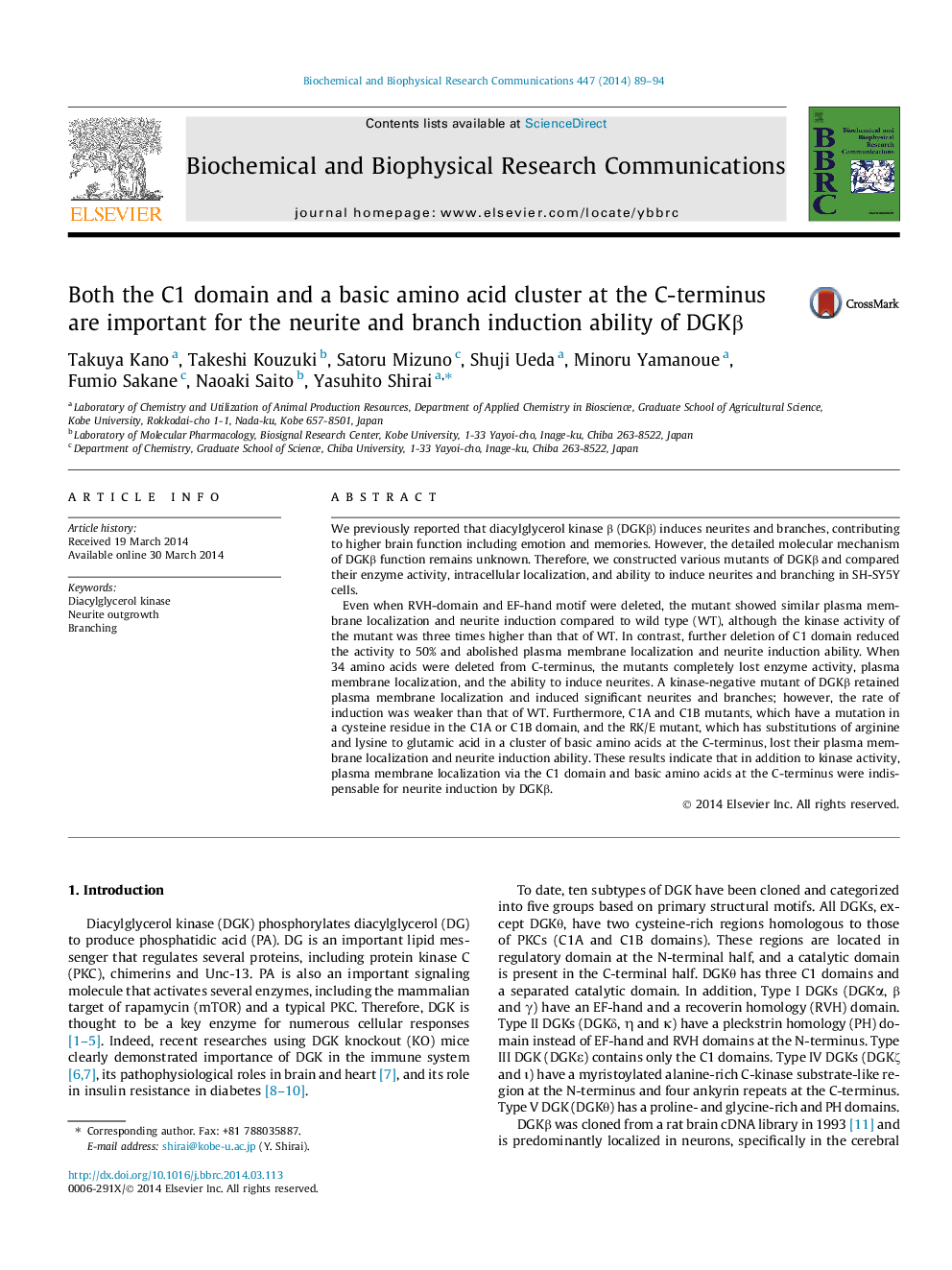| Article ID | Journal | Published Year | Pages | File Type |
|---|---|---|---|---|
| 10755988 | Biochemical and Biophysical Research Communications | 2014 | 6 Pages |
Abstract
Even when RVH-domain and EF-hand motif were deleted, the mutant showed similar plasma membrane localization and neurite induction compared to wild type (WT), although the kinase activity of the mutant was three times higher than that of WT. In contrast, further deletion of C1 domain reduced the activity to 50% and abolished plasma membrane localization and neurite induction ability. When 34 amino acids were deleted from C-terminus, the mutants completely lost enzyme activity, plasma membrane localization, and the ability to induce neurites. A kinase-negative mutant of DGKβ retained plasma membrane localization and induced significant neurites and branches; however, the rate of induction was weaker than that of WT. Furthermore, C1A and C1B mutants, which have a mutation in a cysteine residue in the C1A or C1B domain, and the RK/E mutant, which has substitutions of arginine and lysine to glutamic acid in a cluster of basic amino acids at the C-terminus, lost their plasma membrane localization and neurite induction ability. These results indicate that in addition to kinase activity, plasma membrane localization via the C1 domain and basic amino acids at the C-terminus were indispensable for neurite induction by DGKβ.
Related Topics
Life Sciences
Biochemistry, Genetics and Molecular Biology
Biochemistry
Authors
Takuya Kano, Takeshi Kouzuki, Satoru Mizuno, Shuji Ueda, Minoru Yamanoue, Fumio Sakane, Naoaki Saito, Yasuhito Shirai,
